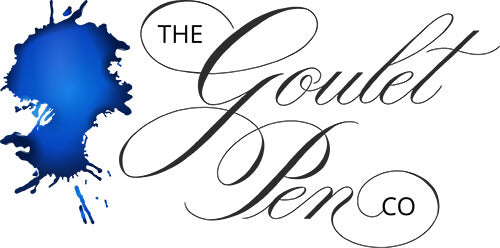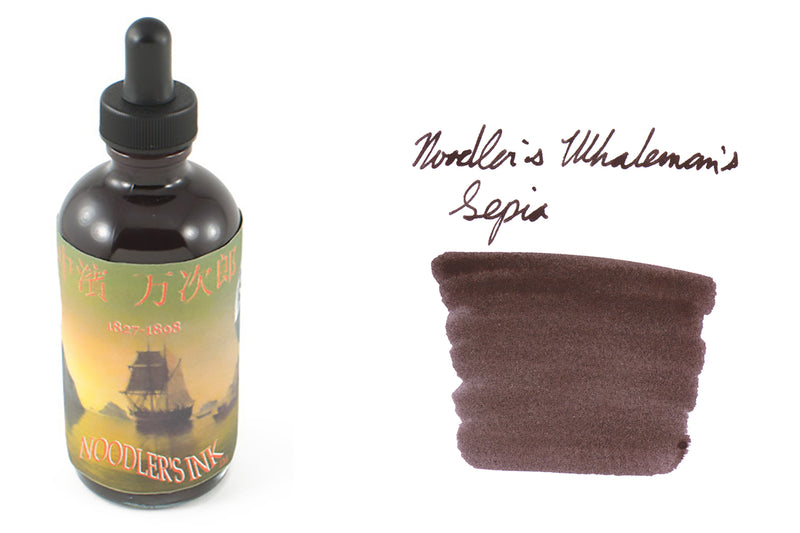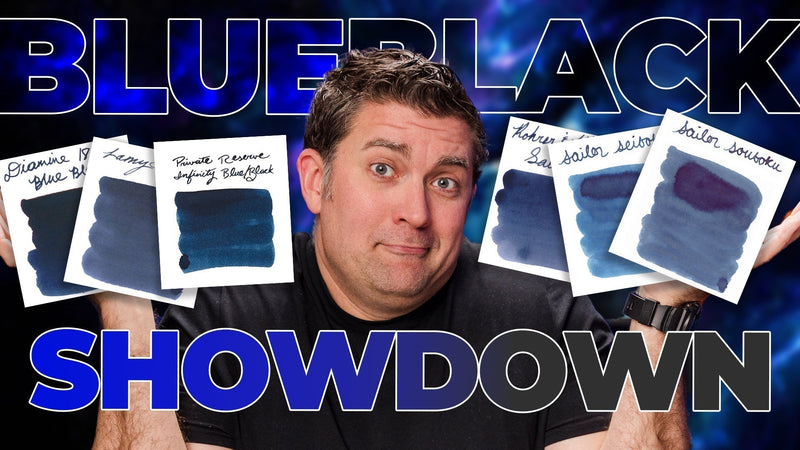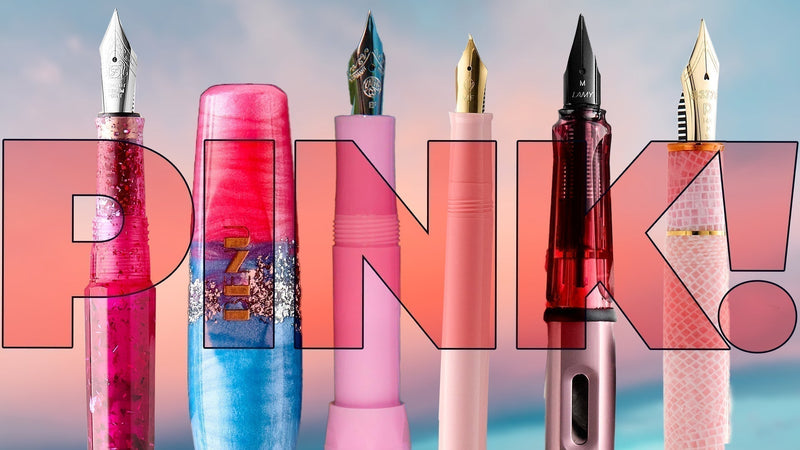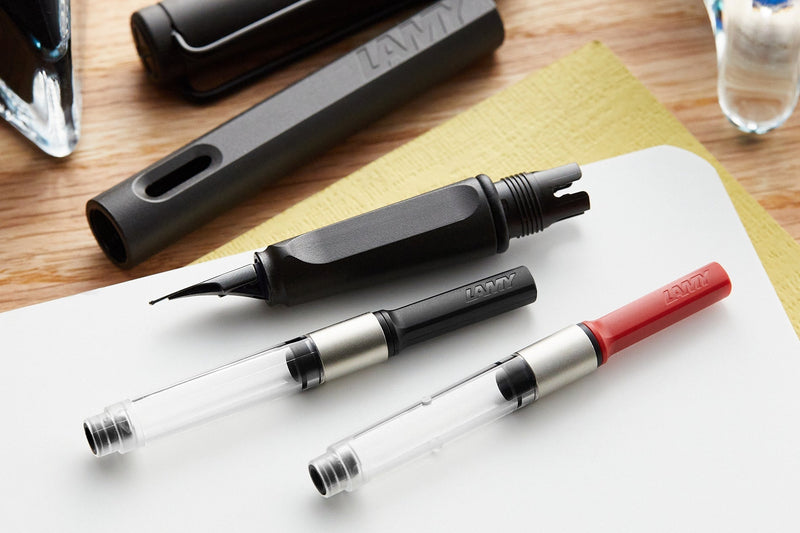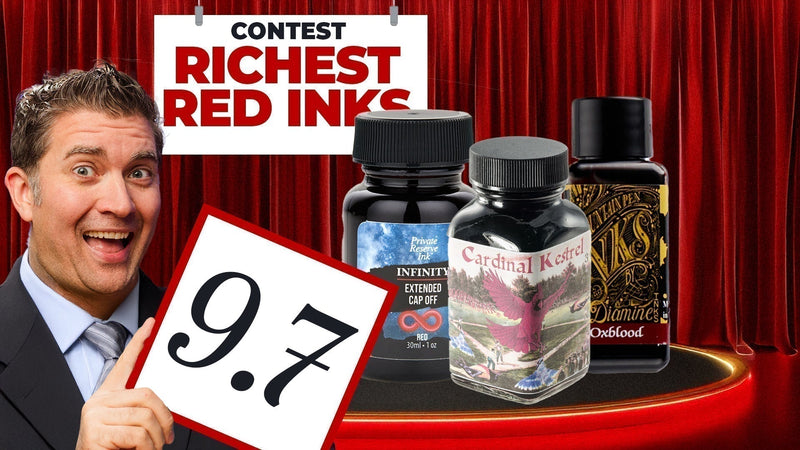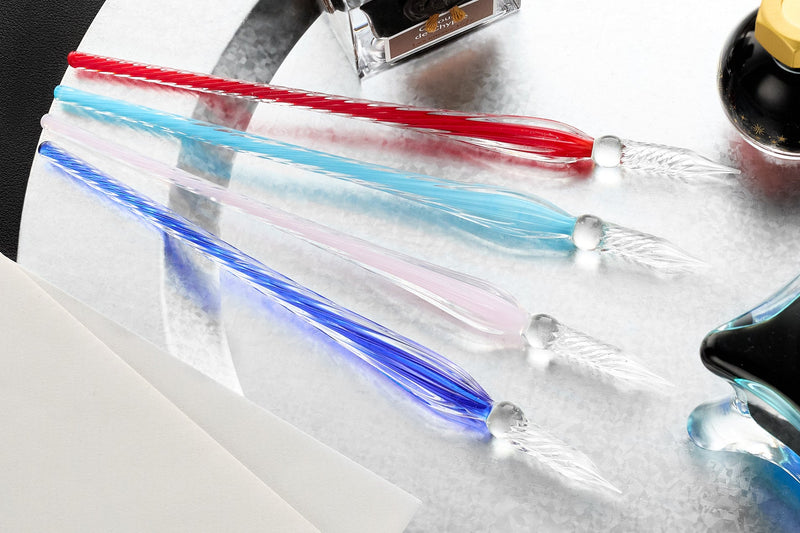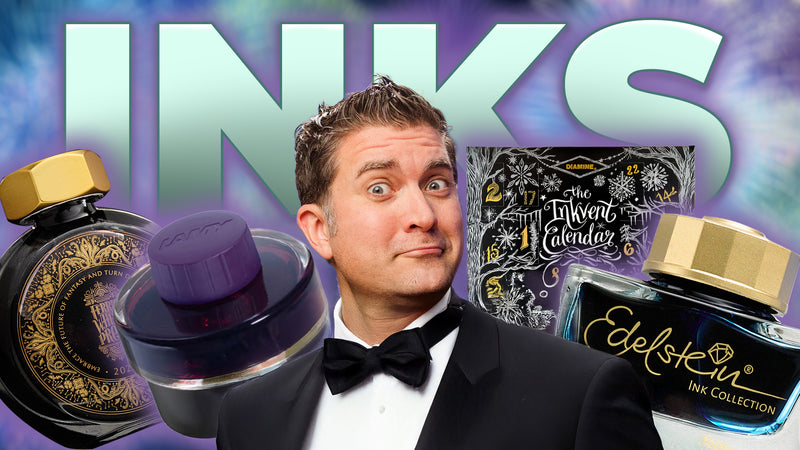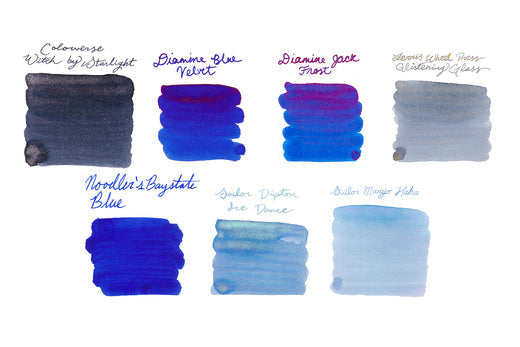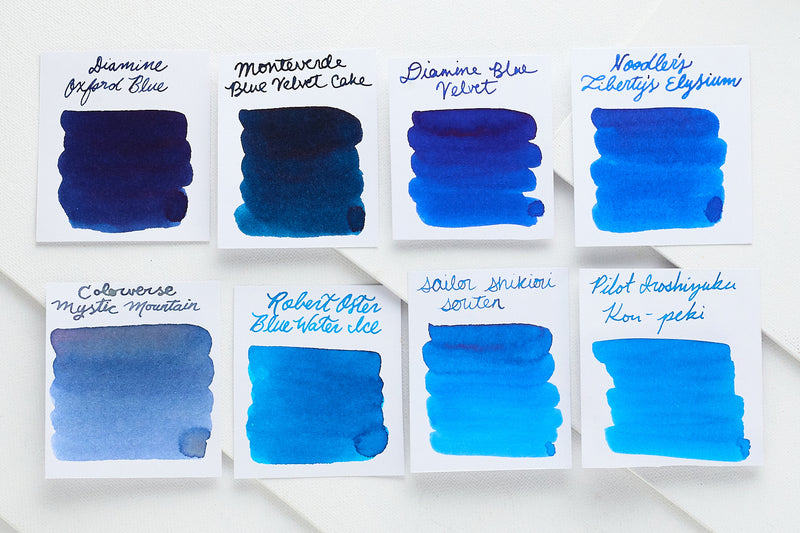Noodler's Manjiro Nakahama Whaleman's Sepia - 4.5oz Bottled Ink with Free Charlie Pen
Noodler's Manjiro Nakahama Whaleman's Sepia - 4.5oz Bottled Ink with Free Charlie Pen
$37.00
Special Goulet-exclusive Noodler's ink! 4.5oz bottle of Noodler's Manjiro Nakahama Whaleman's Sepia fountain pen ink. This bottle has a built-in eyedropper. Comes with a free Noodler's Charlie eyedropper fountain pen. Noodler's inks are handcrafted, so there may be slight color variations from batch to batch.
The Noodler's Ink Company is located just south of the former home of Manjiro Nakahama in Fairhaven, Massachusetts - a town that once was a part of "Old Dartmouth". Dartmouth is the home of Noodler's Ink, and the founder of the company is a member of the Society of Friends - with extensive hereditary ties to the Yankee Whaling Industry that Manjiro knew so well.
The ink is modeled upon whaler's logbook ink of the 1840s. It is a durable deep sepia brown - yet is highly unusual in one respect: it is a security ink that can be tested as genuine with an application of common bleach once dry upon the paper. It will turn brown sepia to red - and if the bleach is strong enough the color changes further still from red to royal purple. These colors were designed for their symbolic value: sepia brown from 1840s whalemen's ink, red for the color of the Japanese national flag, and purple in honor of Emperor Meiji - for his reasoning affected by Manjiro Nakahama.
From the founder of Noodler's Ink concerning the ink design:
What are the sources for determining a whalemen's sepia? There has been mention that sepia is an iron gal based ink. This is completely incorrect. Sepia by definition is based upon a natural, non-synthetic ink in particular cuttlefish and squid ink. Cuttlefish ink makes a classic sepia - dating back to ancient Mediterranean cultures. Whalemen's sepia is different. The Old Dartmouth Historical Society runs the New Bedford Whaling museum - which contains innumerable historical documents written by 19th century whalers. You can see them in person today, but one cannot do much more than that (no chemical analysis for instance).
My source is more personal - that source being my great uncle Reginald Hegarty - who served upon whaleships and whose father was a whale ship captain. Hereditary ties to whaling are extensive, but Great Uncle Reginald is the best source I could hope to have for such an endeavor as the replication of whalemen's logbook ink. A Google search shows who my great uncle was and why his writings and other passed-on information are good sources in the quest to replicate whaler's logbook ink.
Whaling voyages went to the far ends of the earth, and ink from the port of New Bedford would inevitably run out. Quakers, being frugal with any and all capital risked in a whaling endeavor, found a source of ink that abounded any ship in hunt for the whale (particularly the sperm whale) the whale's food: the giant squid. Bits of squid were common - including ink sacs in tact and are able to be refined, filtered through gauze or burlap. Thus, a few preservatives, one had whalemen's logbook ink at little to no added cost to the budget of the voyage.
The Noodler's Ink Company is located just south of the former home of Manjiro Nakahama in Fairhaven, Massachusetts - a town that once was a part of "Old Dartmouth". Dartmouth is the home of Noodler's Ink, and the founder of the company is a member of the Society of Friends - with extensive hereditary ties to the Yankee Whaling Industry that Manjiro knew so well.
The ink is modeled upon whaler's logbook ink of the 1840s. It is a durable deep sepia brown - yet is highly unusual in one respect: it is a security ink that can be tested as genuine with an application of common bleach once dry upon the paper. It will turn brown sepia to red - and if the bleach is strong enough the color changes further still from red to royal purple. These colors were designed for their symbolic value: sepia brown from 1840s whalemen's ink, red for the color of the Japanese national flag, and purple in honor of Emperor Meiji - for his reasoning affected by Manjiro Nakahama.
From the founder of Noodler's Ink concerning the ink design:
What are the sources for determining a whalemen's sepia? There has been mention that sepia is an iron gal based ink. This is completely incorrect. Sepia by definition is based upon a natural, non-synthetic ink in particular cuttlefish and squid ink. Cuttlefish ink makes a classic sepia - dating back to ancient Mediterranean cultures. Whalemen's sepia is different. The Old Dartmouth Historical Society runs the New Bedford Whaling museum - which contains innumerable historical documents written by 19th century whalers. You can see them in person today, but one cannot do much more than that (no chemical analysis for instance).
My source is more personal - that source being my great uncle Reginald Hegarty - who served upon whaleships and whose father was a whale ship captain. Hereditary ties to whaling are extensive, but Great Uncle Reginald is the best source I could hope to have for such an endeavor as the replication of whalemen's logbook ink. A Google search shows who my great uncle was and why his writings and other passed-on information are good sources in the quest to replicate whaler's logbook ink.
Whaling voyages went to the far ends of the earth, and ink from the port of New Bedford would inevitably run out. Quakers, being frugal with any and all capital risked in a whaling endeavor, found a source of ink that abounded any ship in hunt for the whale (particularly the sperm whale) the whale's food: the giant squid. Bits of squid were common - including ink sacs in tact and are able to be refined, filtered through gauze or burlap. Thus, a few preservatives, one had whalemen's logbook ink at little to no added cost to the budget of the voyage.
- Condition
- New
- Brand
- Noodler's
- Type
- Bottled Ink
- Color
- Brown
- Bottle Material
- Glass
- Bottle Opening Diameter
- 14.3mm (0.56in)
- Fast Drying
- No
- Fluorescent
- Yes
- Shimmer
Whether or not the ink contains glittery particles.
- No
- Freeze Resistant
Whether or not an ink is specially formulated to better withstand freezing temperatures.
- No
- Volume
- 4.5oz
- Iron Gall
Ink made from iron salts and tannic acids. Though quite permanent and waterproof, these inks are typically known for causing chemical corrosion to metal pen parts (especially the nib) and should be used sparingly or with less-valuable pens.
- No
- Lubricated
Whether or not an ink is specially formulated to increase flow in your pen.
- No
- Pigmented
Whether or not the ink contains finely-ground solid particles in liquid suspension.
- No
- Scented
- No
- Water Resistant
Whether or not the ink, once dried on the paper, will resist being washed away with water.
- Yes
